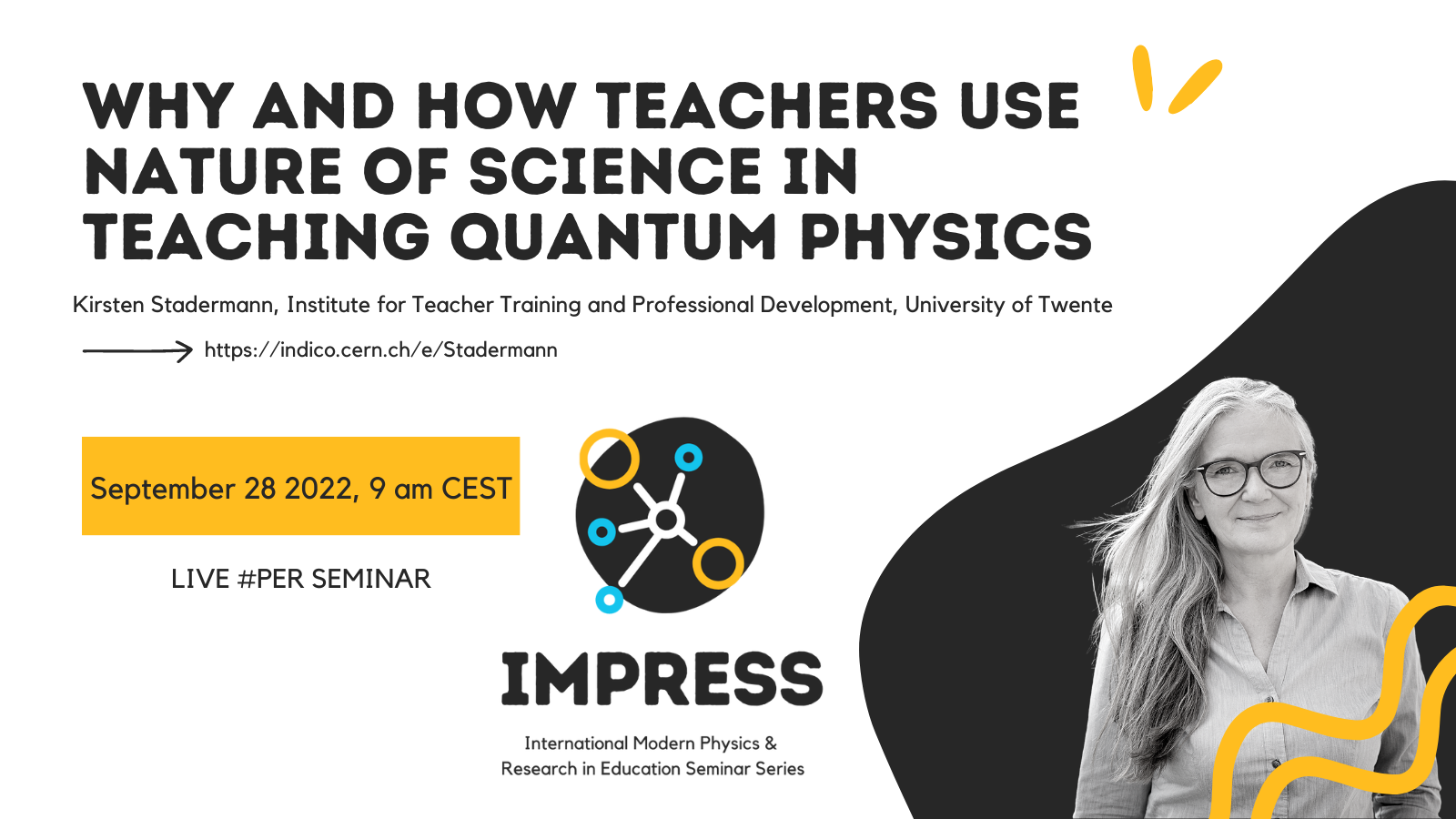Why and how teachers use nature of science in teaching quantum physics
by
From the big bang to black holes, from elementary particles and the fundamental interactions that govern our universe to the world's largest and most complex scientific instruments, our knowledge of the world builds on modern physics. To make our current-best understanding available to all, we need to invest in educational research and bridge the gap between those who know science, those who teach science, and those who learn science.
This month, we are going to discuss a paper by Kirsten Stadermann and Martin Goedhart on why and how teachers use nature of science in teaching quantum physics:
Students at upper secondary and college level in many countries are introduced to quantum physics (QP) in a mostly mathless course. Research shows that addressing epistemological and philosophical aspects would be beneficial for novice students’ conceptual understanding. However, physics teachers seldom address these nature of science (NOS) aspects in their lessons. We take the view that teachers only implement these aspects if this serves their goals. This study explores whether experienced Dutch high school teachers, who are not trained for NOS teaching, address NOS in their QP lessons when provided with NOS-infused teaching resources. We based our framework on literature about pedagogic content knowledge and on the principles of the practicality of educational innovations. Teacher interviews (N=10) supported by classroom observations provided insights into how and why teachers use specific elements from the resources. Our research reveals teachers’ perspectives on teaching QP in secondary schools and why they think NOS aspects can be helpful to reach their teaching goals. Our findings support the view that conceptual QP is valuable for all students because an informed NOS view is vital for everybody in today’s society. Additionally, we expect that an ecological intervention that supports teachers and at the same time recognizes their professionality and environment has potential implications for other fields of science education and could have a significant positive impact in classrooms.
Paper:
Stadermann, H. K. E., & Goedhart, M. J. (2021). Why and how teachers use nature of science in teaching quantum physics: Research on the use of an ecological teaching intervention in upper secondary schools. Physical Review Physics Education Research, 17(2), 020132. https://doi.org/10.1103/PhysRevPhysEducRes.17.020132

Magdalena Kersting (Department of Science Education, University of Copenhagen, Denmark) and Julia Woithe (Science Gateway Education, CERN, Switzerland)